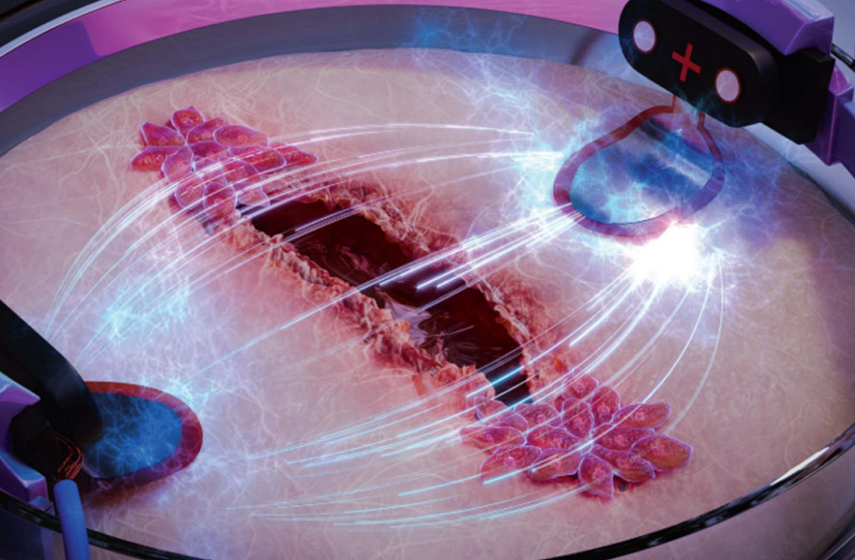A joint project between Chalmers University of Technology in Sweden and the University of Freiburg in Germany has seen research teams develop a method using electric stimulation to speed up the healing process, making wounds heal three times faster.
Chalmers University of Technology associate professor of Biometrics, Maria Asplund, said the teams worked from an old hypothesis that electric stimulation of damaged skins can be used to heal wounds.In recognising that skin cells can directionally migrate in electric fields, the research team used a tiny engineered biochip to compare wound healing in cultured skin cells, stimulating one wound with electricity and letting one heal without electricity.
The differences were “striking”, Asplund said.
Unspoken problem
“Chronic wounds are a huge societal problem that we don’t hear a lot about. Our discovery of a method that may heal wounds up to three times faster can be a game changer for diabetic and elderly people, among others, who often suffer greatly from wounds that won’t heal.”During the same study, the researchers also focused on wound healing in connection with diabetes, a growing health problem worldwide.
“We’ve looked at diabetes models of wounds and investigated whether our method could be effective even in those cases. We saw that when we mimic diabetes in the cells, the wounds on the chip heal very slowly. However, with electric stimulation we can increase the speed of healing so that the diabetes-affected cells almost correspond to healthy skin cells,” Asplund said.
Everyday development
The Chalmers researchers recently received a grant which will allow them to continue their research in the field, and in the long run, enable the development of wound-healing products for everyday consumers.Similar products have come out before, but more basic research is required to develop effective products that generate enough electric field strength and stimulate in the right way for each individual.
Asplund said they are now looking at how different skin cells interact during stimulation, to take a step closer to a realistic wound.
“We want to develop a concept to be able to ‘scan’ wounds and adapt the stimulation based on the individual wound. We are convinced that this is the key to effectively healing individuals with slow-healing wounds in the future.”
Do you need aged care support for yourself or a loved one? Just Better Care is designed to help people from diverse backgrounds with different lifestyles and personalities achieve their goals. Get started by talking to a local team member today.
Image: Chalmers University of Technology


.png?width=1200&height=623&ext=.png)

